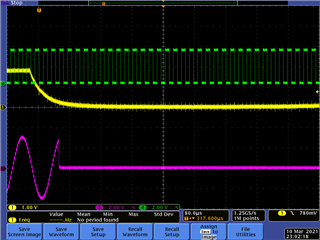Hi,
Could you please let me know about Rise time / Fail time of XSMT? Datasheet show 20ns MAX for Rise and Fail time.
If customer's system cannot meet to set signal within 20ns, What will PCM5101A be happen? (The 20ns is too fast to set by his system, Could you please let me know treat this?)

Regards,
Nagata.






